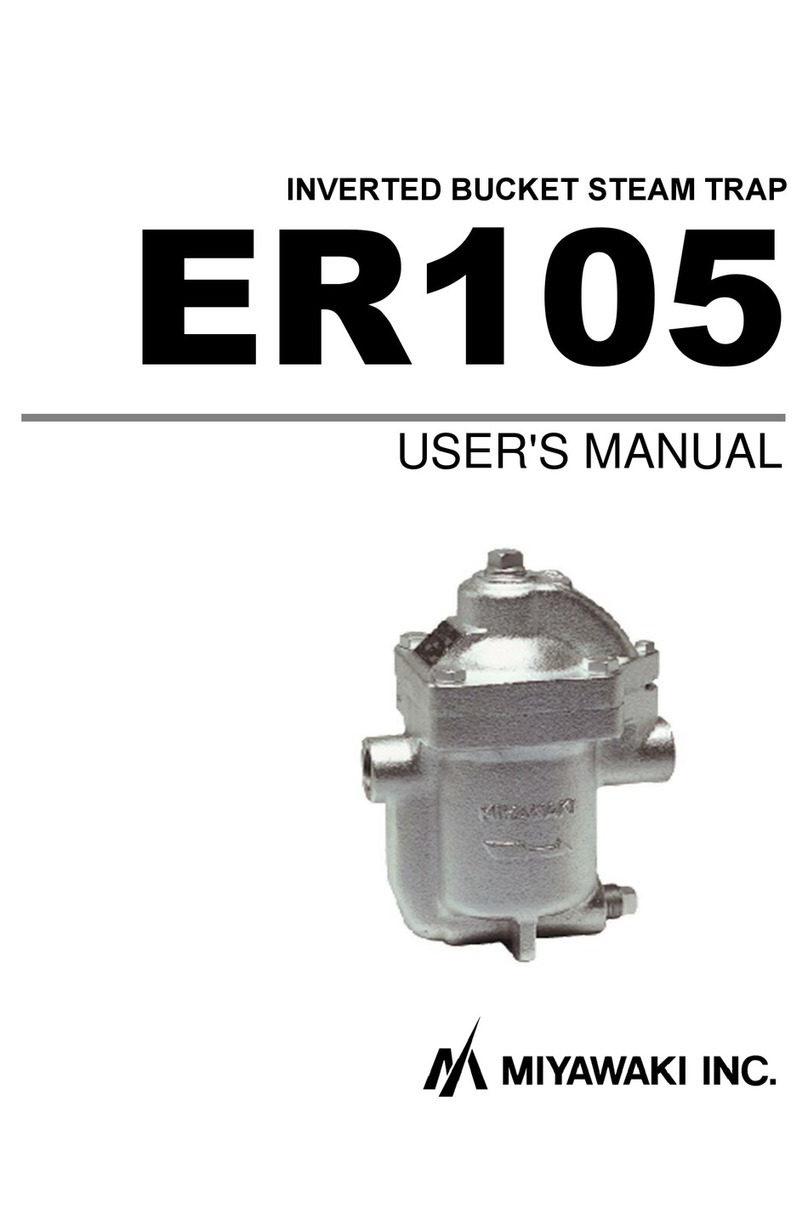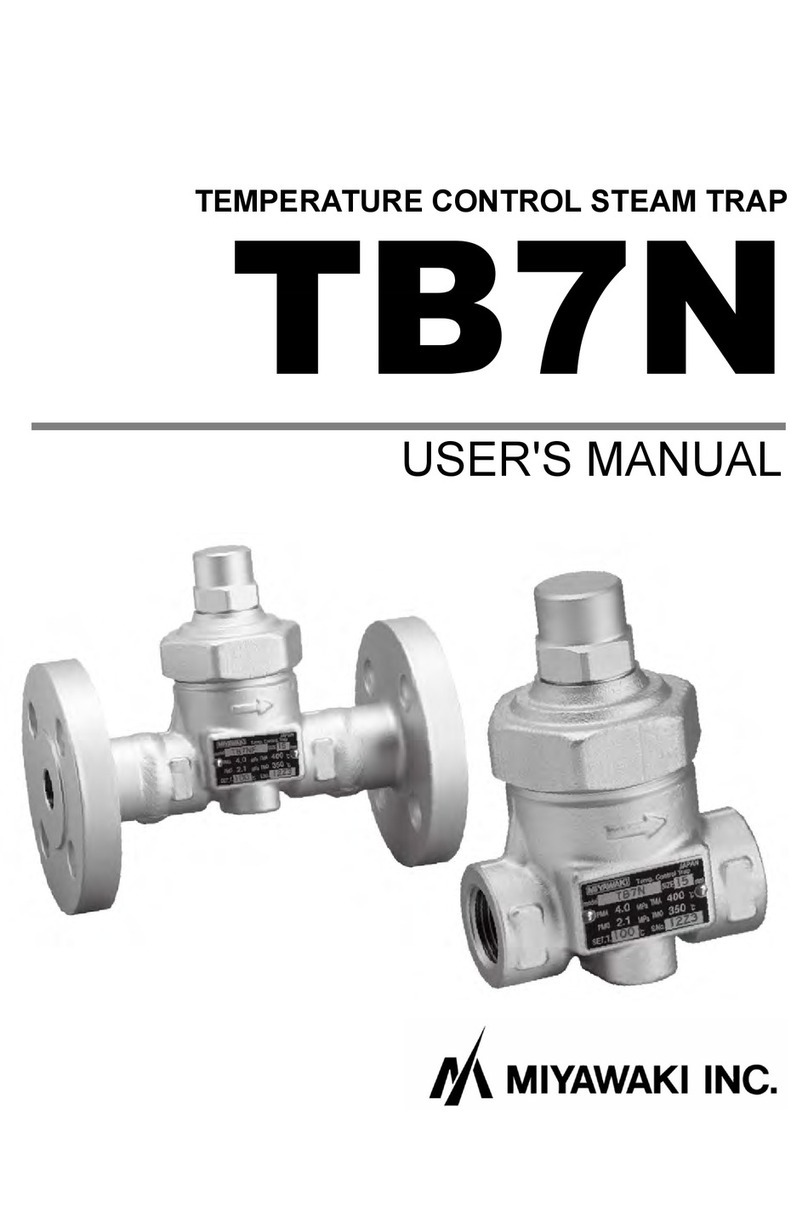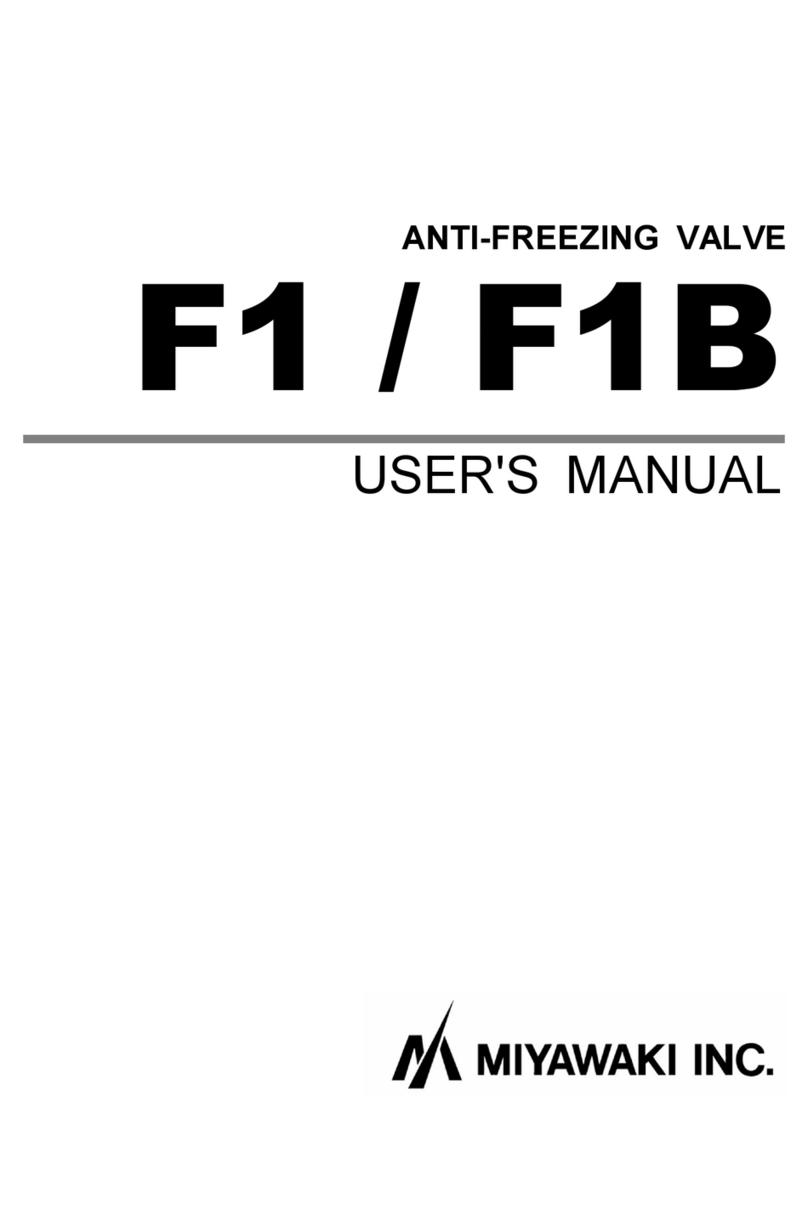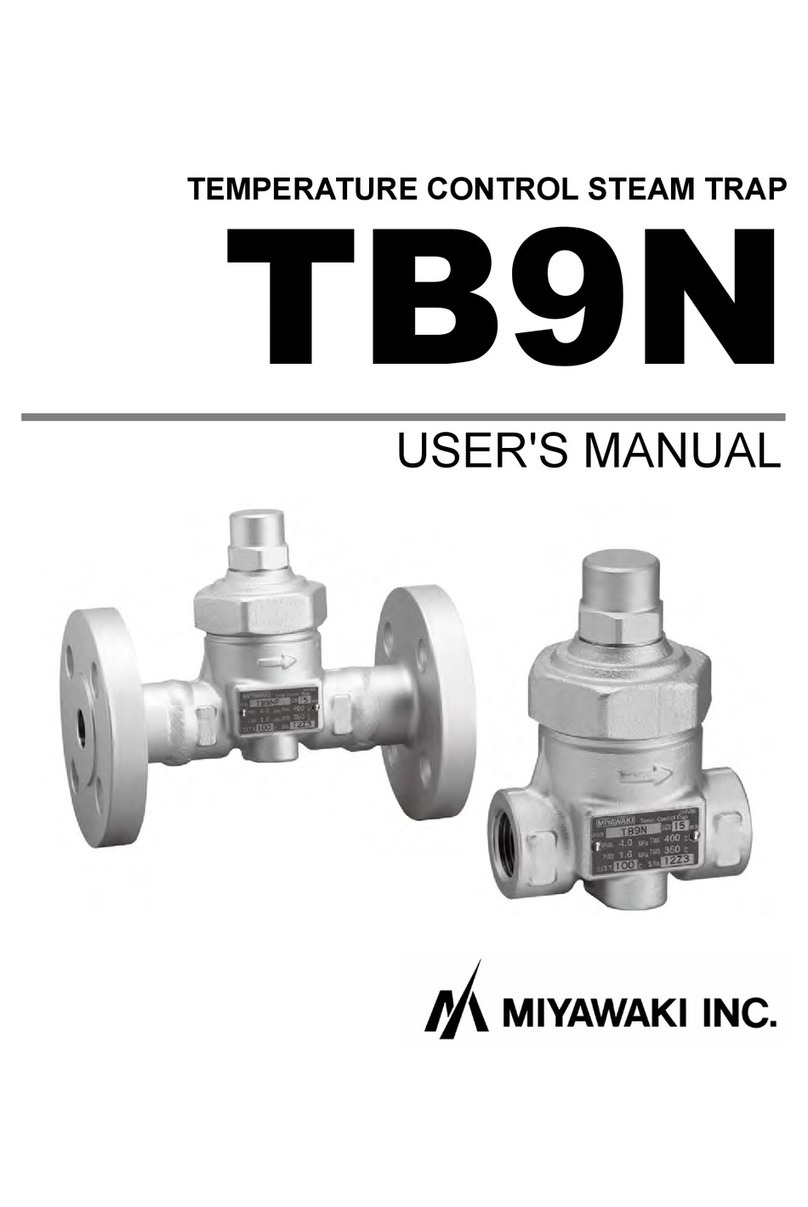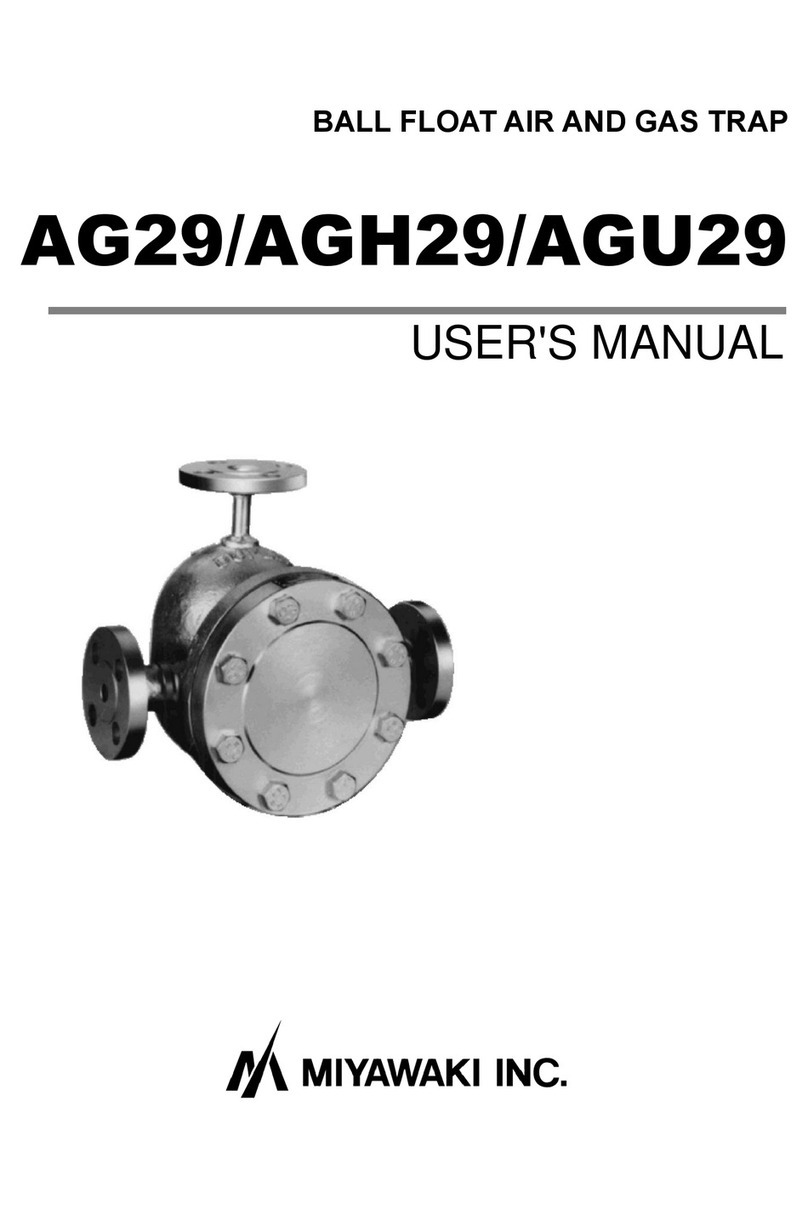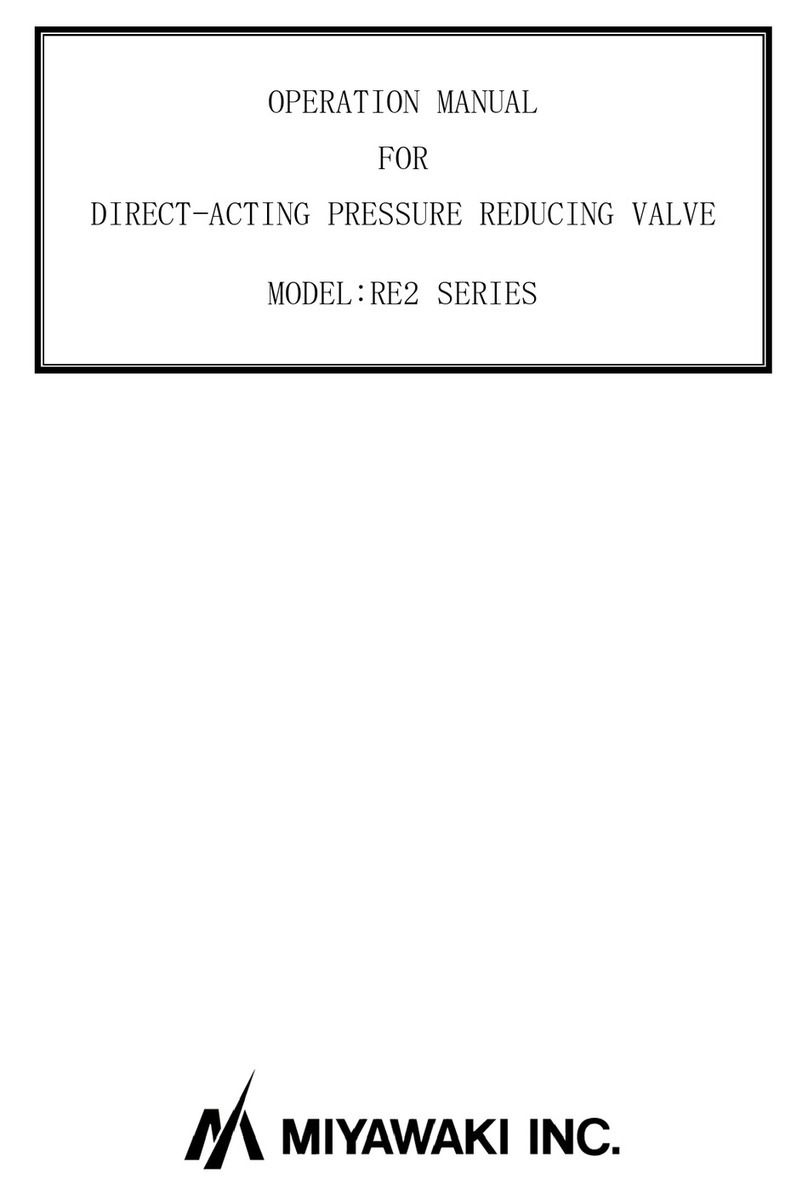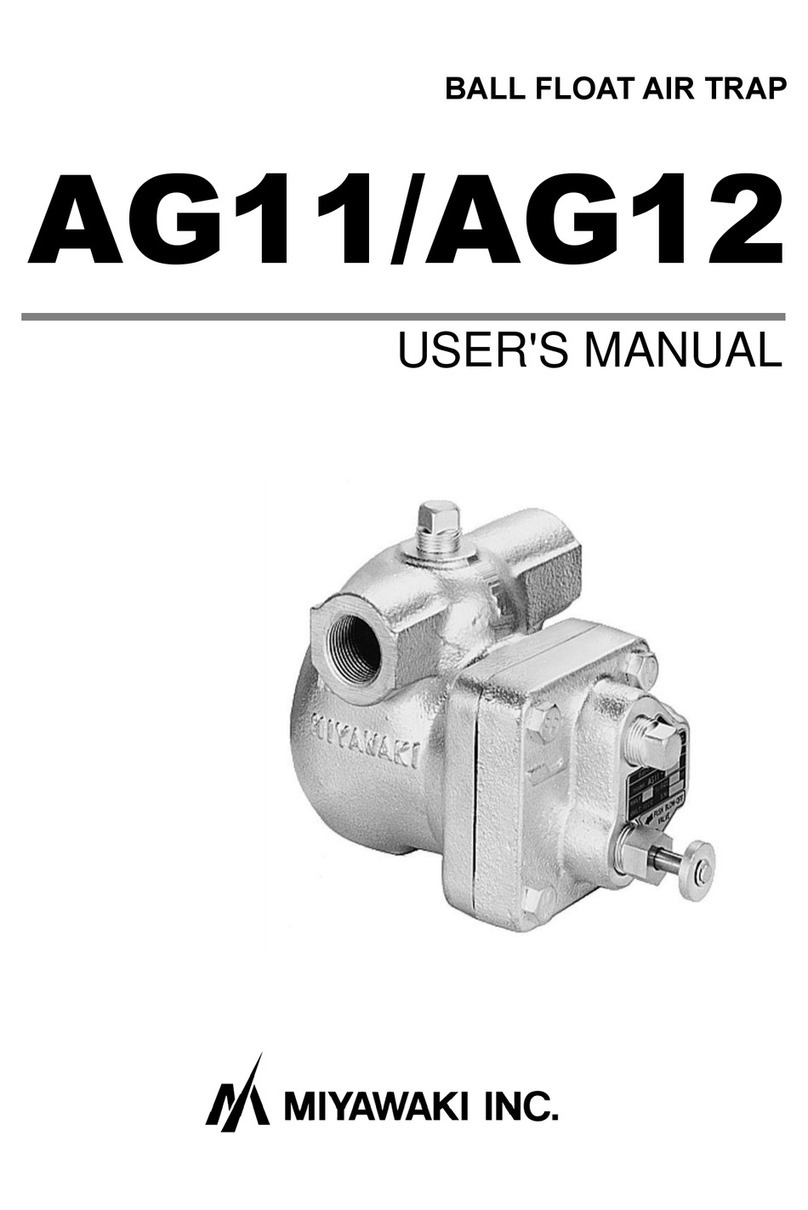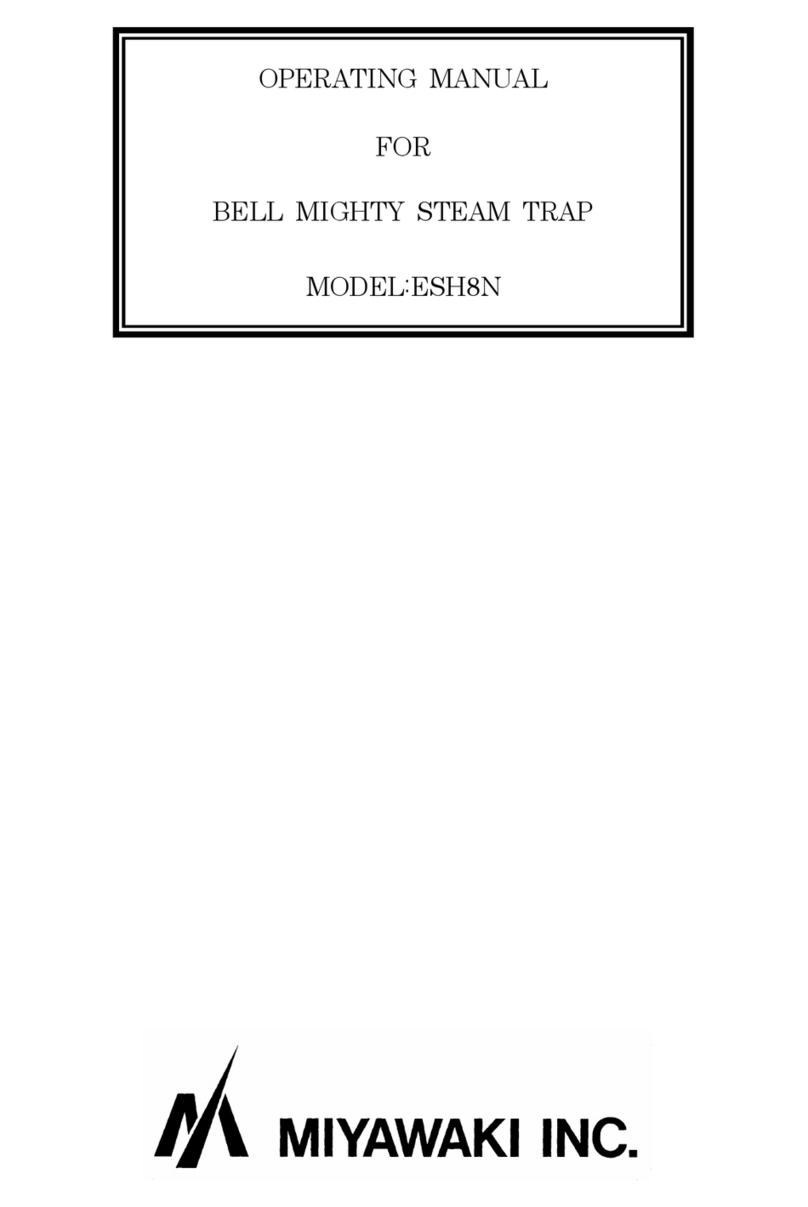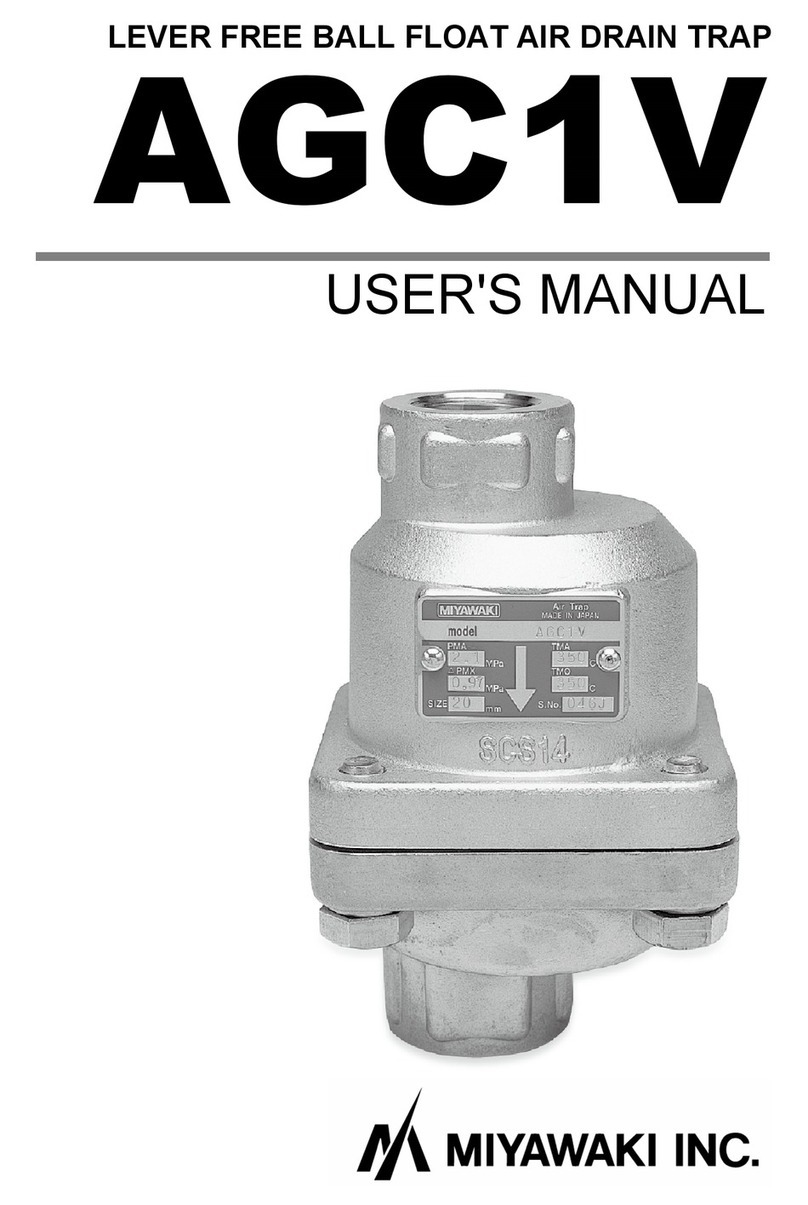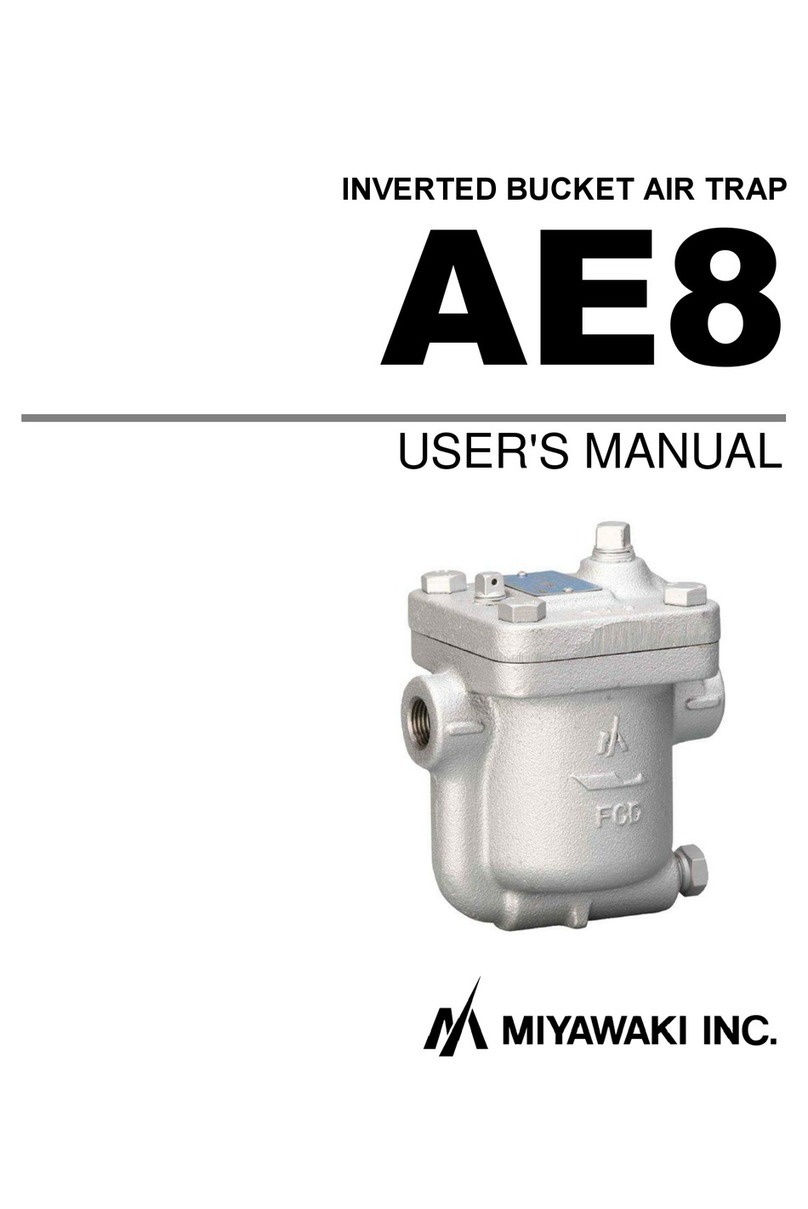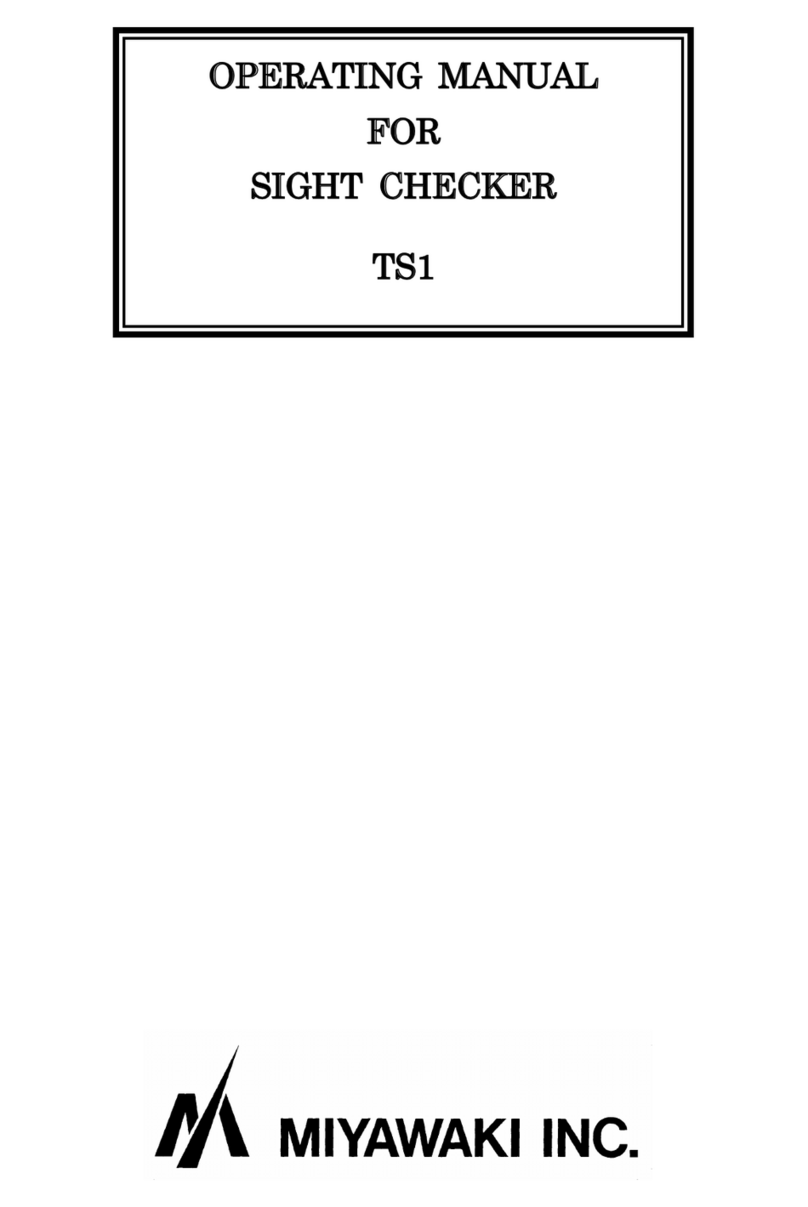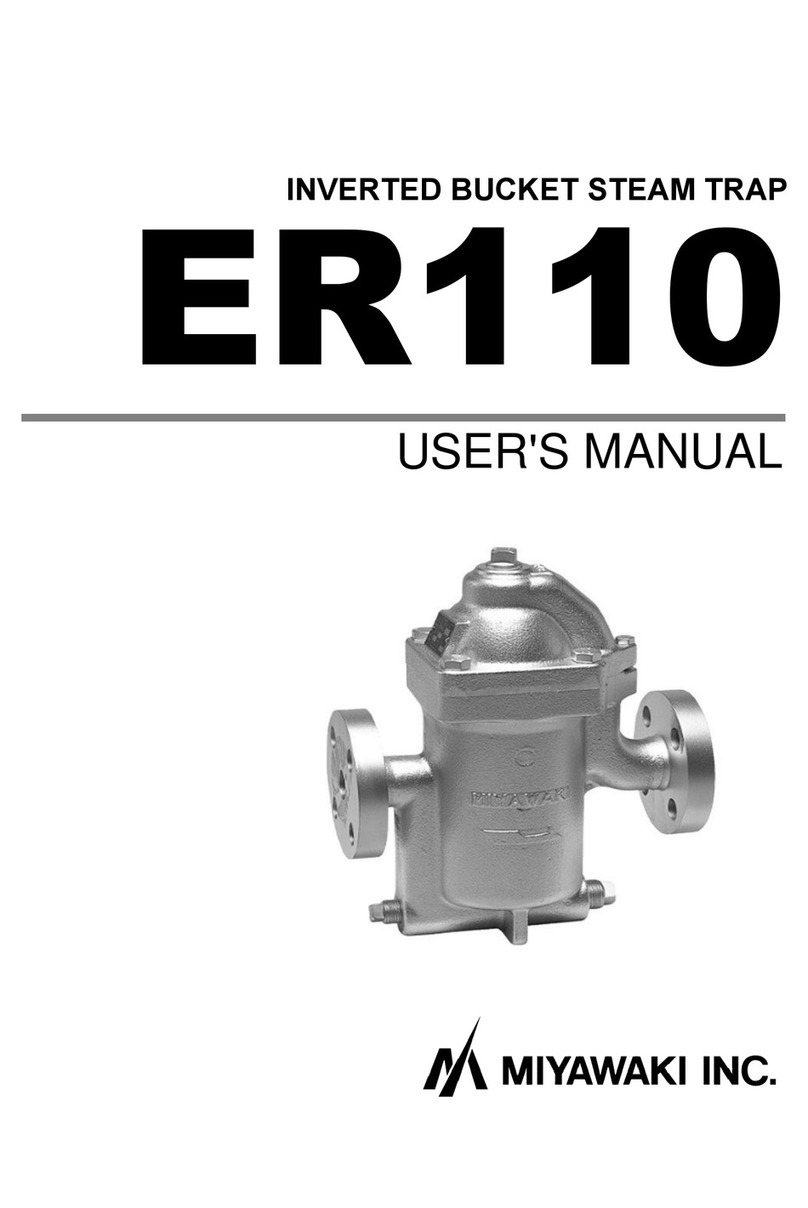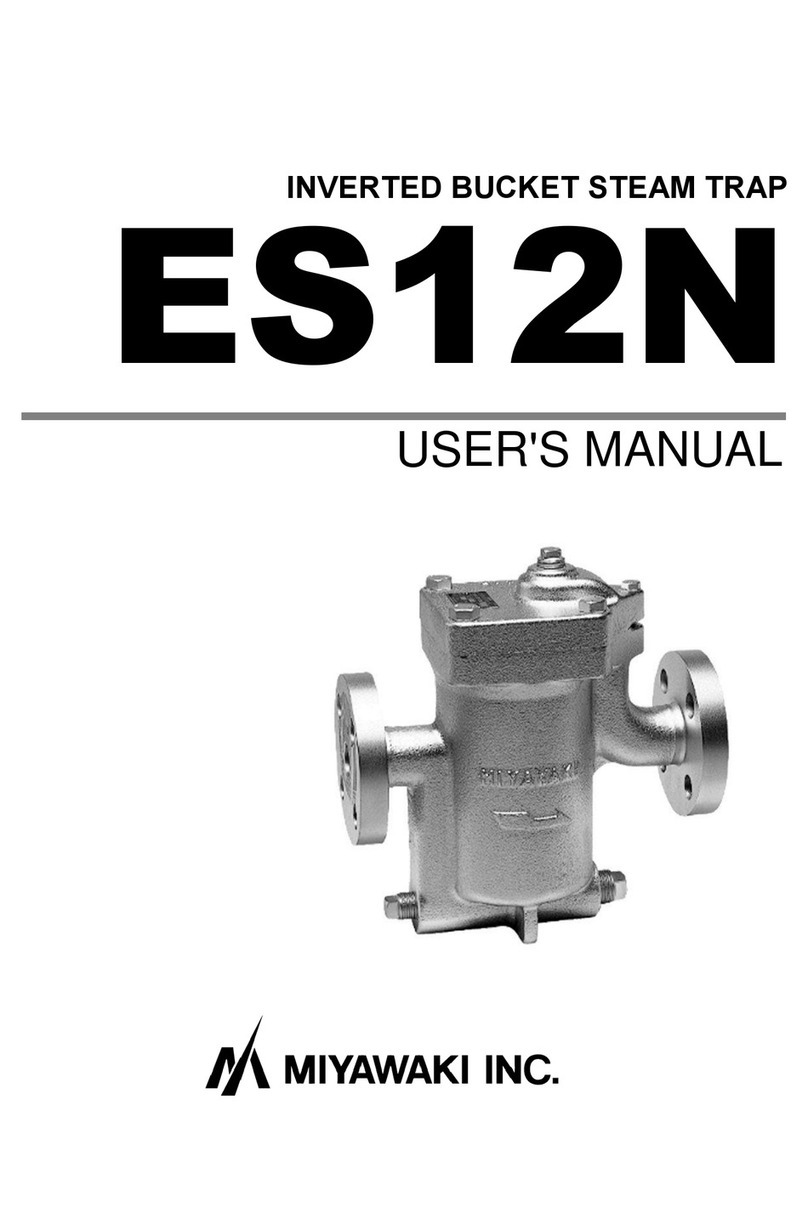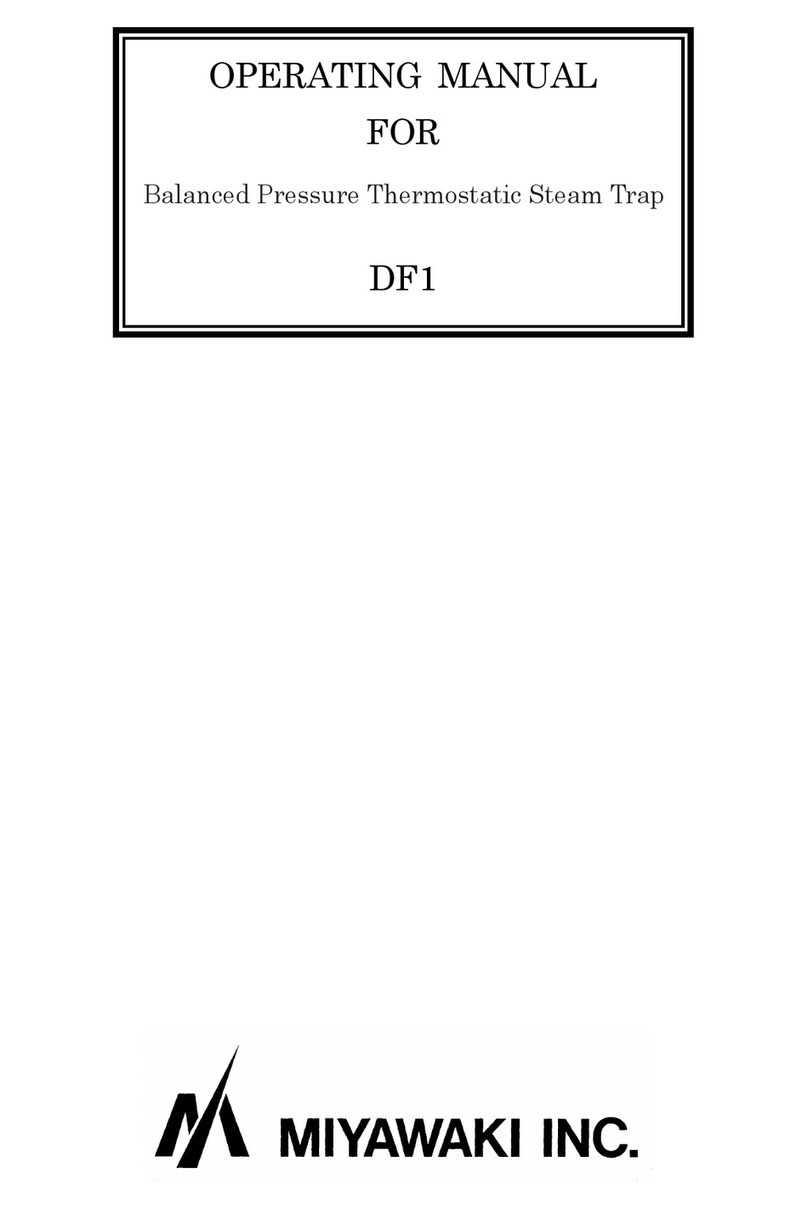
5 MAINTENANCE
WARNING
Before removing the trap from the pipe or disassembling it, be sure to close the
isolation valves. Then, release the residual pressure from the trap body (make
sure that the pressure in the main body is equal to the atmospheric pressure).
After it has fully cooled down (after the temperature of the main body has
reached ambient temperature), confirm for safe conditions and then begin work.
Even when the isolation valves are closed, there may be residual internal
pressure due to leaks from the isolation valves. Therefore, be very careful.
CAUTION
When replacing parts, make sure the replacement parts are supplied by Miyawaki.
The performance of steam traps deteriorates gradually over time due to wear, corrosion, or
dirt accumulating around the valve seat. To keep steam control systems and equipment
working well, periodic maintenance of steam traps is essential.
5.1 Tools for Testing Steam Traps
In order to test steam traps, ultrasonic testers, sound detectors, and thermometers have
been used for years. These tools are relatively easy to use and are useful for making
rough estimates of the level of deterioration in a defective trap. However, to determine
deterioration levels and steam losses quantitatively, special tools for testing steam traps
are required.
Dr. Trap and Dr. Trap Jr. are testing equipment that was developed specifically for
diagnosing steam traps and analyzing survey results automatically. Use these tools to
avoid tiresome jobs on site and save working time.
5.2 Working Conditions of a Steam Trap
Steam trap failures can be classified as either “Leaking” or “Plugged”. The level of steam
leaks is generally determined by the intensity of the ultrasonic vibration generated in the
valve seat inside of a steam trap. Plugging is diagnosed by measuring the surface
temperature. As plugging progresses due to a buildup of dirt in the trap, it finally becomes
completely plugged. Then the surface temperature will drop to around 40°C (104°F), or
lower.
5.3 Repairs
When a trap fails, it is necessary to clean the internal parts and to replace damaged parts.
Take the failed trap apart following the steps below.
